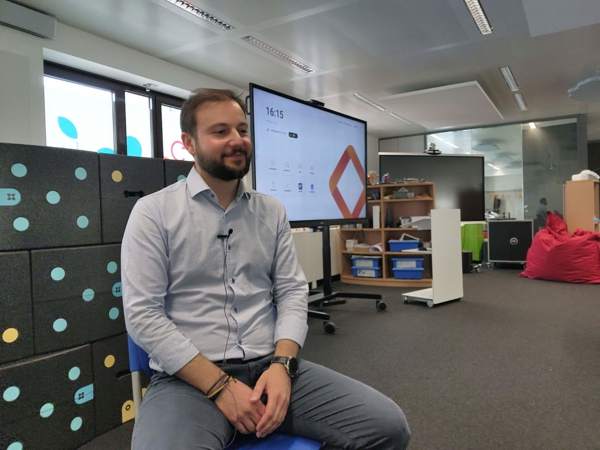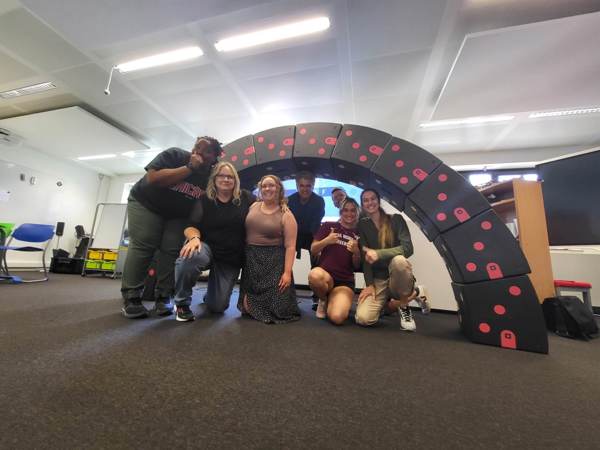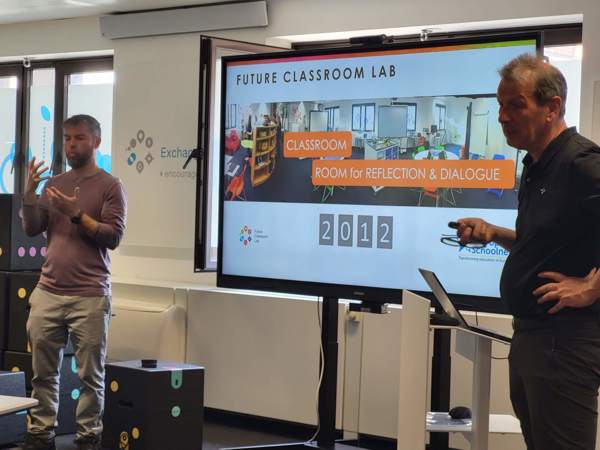5 Critical Skills Students Need in the Digital Classroom
The article identifies five crucial digital skills for students: digital problem-solving, digital creativity, collaborative learning, active digital citizenship, and applying digital skills across various subjects.
Introduction
Digital skills have become crucial for students to navigate the modern educational context, both in and outside the classroom. Technology is omnipresent in students' lives, and it is fundamental for them to understand how to use it responsibly.
Educators, parents, and policymakers must ensure that young individuals do not mindlessly consume digital content but acquire the skills to actively engage with, critically analyze, and thoughtfully create content within the digital landscape. By doing so, we can foster a generation of digital citizens who are not just consumers but informed creators and problem solvers, effectively using technology to enhance their learning experiences and contributions to the digital world.
At the forefront of this crucial mission is the Educational Advisor at European Schoolnet, Tommaso Dalla Vecchia, with whom we have discussed the digital skills students need in the modern classroom.
What is the Future Classroom Lab (FCL)?
The Future Classroom Lab (FCL) is an innovative platform designed by European Schoolnet, where Tommaso Dalla Vecchia has worked for over ten years. Located in Brussels, the FCL is a reconfigurable learning environment that challenges educators to reconsider their classroom's pedagogy, technology, and design. More than just a space, FCL encourages the exploration of 21st-century competencies, diverse learning styles, and the impact of learning environments on student engagement and interaction. It also promotes using current and emerging technologies to support all these areas while keeping up with societal trends impacting education.
Over the past decade, FCL has been instrumental in transforming the education landscape. Classrooms have evolved from teacher-centric environments where technology was a mere adjunct to the teacher's toolkit to dynamic, student-centric ecosystems. Technology catalyzes these innovative spaces, enabling students to engage more deeply with learning material and fostering a sense of autonomy in their educational journey.
The FCL embodies this shift by transforming learning spaces to accommodate diverse learning styles and active learning. It allows educators and other stakeholders to explore technology-rich learning environments, shifting from a subject-centric focus to competence-based learning and investigating cross-curricular approaches. The FCL offers the opportunity to experiment with different classroom layouts, furniture, and EdTech tools, pushing the boundaries of traditional educational practices.
Moreover, FCL highlights the concept of innovative, flexible learning spaces. Visitors can visualize various classroom settings and understand the significance of learning-space design in supporting the active learning process.
Since its inauguration in 2012, FCL has fostered strong partnerships with increasing ICT providers, backed by European Schoolnet and its supporting Ministries of Education. This collaboration has been pivotal in ensuring a self-funded, sustainable platform where key stakeholders regularly convene to shape future school visions and devise strategies to realize them.
Providing this comprehensive approach to reshaping traditional learning environments, FCL paves the way for developing essential digital skills that today's students require.
Our Head of Education, Jeroen De Keyser, has discussed some of the skills modern students need to use technology in a digital classroom with FCL's Tommaso Dalla Vecchia.

1. Problem-solving using digital tools
Problem-solving through digital technology is a fundamental skill for students in a digitally enhanced world. As Tommaso points out,
"This is when the empowerment happens. Really when students feel that they can solve problems with digital technology, this is when the deep learning happens."
Several innovative solutions address the need to cultivate this ability. Microlearning mobile apps, Virtual Reality (VR) technologies, and gamified learning tasks foster problem-solving skills by enhancing information retention, providing interactive learning experiences, and stimulating engagement. Artificial Intelligence (AI) furthers personalized learning, helping students focus on areas that require improvement.
Higher education institutions utilize virtual simulations to promote creative problem-solving, allowing students to experiment, take risks, and make decisions in a controlled environment. When coupled with blended learning strategies, this approach can cultivate problem-solving skills by immersing students in various learning scenarios.
2. Cultivating Digital Creativity
Research has found that digital tools like interactive whiteboards can be great for nurturing creativity, promoting student engagement, and enriching learning. As Tommaso observes,
"All activities that include creative learning through digitally enhanced activities are very powerful in engaging the whole classroom."
Digital creativity can emerge in myriad ways, from digital storytelling and coding to data visualization and VR experiences. Teachers can leverage these tools to stimulate critical thinking and problem-solving skills by incorporating creative techniques into their teaching strategies.
The successful implementation of digital tools to boost creativity depends on several factors. These include teachers' perceptions of their roles, pedagogical methods, school context, and access to and experience with interactive technology. A balanced integration of these elements can significantly improve the effectiveness of digital tools in nurturing creativity.
The digital classroom presents unique opportunities for students to explore their creativity and problem-solving abilities. Digital creativity is not just about using technology but leveraging these digital tools to shape learning experiences and express ideas.

3. Collaborative Learning in the Digital Classroom
Thanks to ever-present technology in the modern classroom, students can now participate in collaborative learning through various digital platforms. Tommaso from the Future Classroom Lab highlights the benefits of these tools, stating:
“All the activities that include creative learning, active learning, collaborative learning, and also socially meaningful learning through digitally enhanced activities we see are very powerful in engaging the whole classroom regardless of gender."
Digital collaboration platforms, often available as Android apps, serve as a medium for information, document sharing, and fast-paced communication. Tools like i3-Technologies' i3TOUCH X2 interactive whiteboard can be seamlessly integrated into the classroom to foster collaboration and engagement. By encouraging interaction and cooperation, such technologies unite students and teachers from diverse backgrounds, fostering a learning culture that values empathy, understanding, and cross-cultural collaboration.
4. Active Digital Citizenship in the modern classroom
In the modern classroom as well as in society, students are evolving from mere users of technology to informed and responsible digital participants.
"Teaching with digital technology engages students in learning different subjects and develops them as better active digital citizens," states Tommaso.
Navigating the digital landscape involves the understanding and application of key concepts that enhance online safety, respect, and responsible usage. Digital citizenship embodies a broad spectrum of notions. It encourages students to connect, empathize, and foster meaningful online relationships while discouraging detrimental behaviors such as cyberbullying and irresponsible social media usage.
Educators play a pivotal role in instilling vital competencies in their students. They promote empathy, which is essential in fostering a respectful and understanding online community. A comprehensive understanding of internet functionality aids students in leveraging digital platforms effectively, while awareness of user data privacy guides them in safeguarding personal information online.
Another pillar of digital citizenship is digital literacy, which ensures that students can critically evaluate and use digital content while understanding the digital divide helps students appreciate the varied levels of access to technology across different communities. Advocacy for digital wellness equips students with strategies for managing screen time and balancing offline and online activities.
Finally, understanding concepts related to digital safety empowers students to protect their devices from threats and be less susceptible to online fraud. By weaving these elements together, educators prepare students for an informed and safe engagement with the digital world.
5. Applying digital skills across different pedagogical areas
A holistic education approach integrating digital skills across all learning areas is pivotal. Tommaso observes the growing trend of this approach, stating,
"It's more and more popular, this cross-curricular way of integrating the development of digital skills. And this is very helpful and impactful."
In this context, digital competence surpasses mere technical proficiency. It includes a broad set of skills, knowledge, attitudes, essential education components, professional growth, and civic participation. The European Framework for the Digital Competence of Educators (DigCompEdu) provides valuable guidance to educators to foster digital competence. DigCompEdu describes 22 competencies organized in six areas. Each area covers different aspects of digital competence, from selecting digital resources and managing digital content to enabling learners to plan, monitor, reflect on their learning, understand, and responsibly use digital technologies. Educators can help students navigate the digital world confidently and skillfully by integrating digital competencies across curricula, equipping them with 21st-century digital skills. But these skills aren't limited to the functional realm alone. They play a crucial role in fostering an inclusive and diverse digital community where every student feels represented and heard.
How FCL upholds inclusivity in digital education
A cornerstone of the Future Classroom Lab's approach is the proactive pursuit of gender inclusivity in digital education. The initiative acknowledges the importance of inclusivity, curating curricula, activities, and lesson plans that appeal to diverse students, regardless of gender.
The objective is to impart ICT or digital competencies as technical skills and foster an immersive learning experience through creative and socially meaningful digitally enhanced learning. From coding to other digital competency-building exercises, every effort is made to ensure these offerings resonate with both boys and girls alike. This approach widens the appeal of digital skills, ICT, STEM, and science to all genders and ages. However, developing and implementing digital skills must be a collaborative endeavor to realize this inclusive vision.

How to develop inclusive educational policies?
Just as FCL emphasizes inclusivity within the classroom, it also recognizes the importance of diverse inputs in shaping the future of digital education. An essential aspect of Tommaso's vision is the strategic interplay between the public and private sectors. He asserts,
"The private sector and the public sector can really learn from each other and develop better plans, policies, and better EdTech solutions that are more fitting the needs of the education sector."
The Future Classroom Lab actively seeks collaboration with industry partners, tapping into their expertise to co-develop apt training programs and optimize the pedagogical potential of technology. This cross-sector synergy cultivates better planning, policy development, and the creation of EdTech solutions finely tailored to meet the dynamic needs of the education sector. As such, FCL ensures that inclusivity in digital education extends beyond the student body, embedding diversity and plurality of perspectives at the heart of its strategy.
Conclusion
The need to cultivate digital skills in students is critical in our increasingly digital world. Our responsibility is to ensure that all young individuals are equipped with these essential skills to be successful digital citizens. Tommaso Dalla Vecchia's 11-year journey at the Future Classroom Lab has seen him experience a significant shift from teacher-centric to student-centric approaches in schools, where technology is used not only as a teaching tool but also to empower students. Through problem-solving and creative exercises, students move beyond passive learning, demonstrating the true power of digital skills and marking a significant step towards building a future generation proficient in digital technology.

